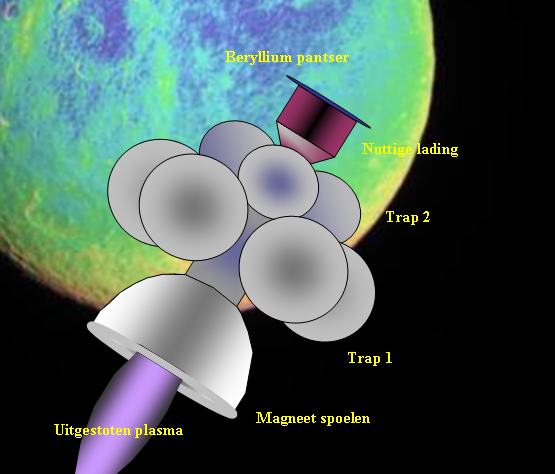Hyperspace Challenge Accelerator Announces 2021 Cohort Winners

Winning Pitches by Startup and University Cohort Finalists Address Key U.S. Space Force Needs
ALBUQUERQUE, N.M. — Hyperspace Challenge, a business accelerator run by the Air Force Research Laboratory and CNM Ingenuity as part of the U.S. Space Force’s new SpaceWERX program, announced today the six winners of its 2021 cohort.

Three winners hailed from the accelerator’s startup group, which included 13 companies, and three winners represented its universities group, which included 11 academic teams. Both groups were tasked with developing technology that can be applied to or solve problems in the space domain.
Hyperspace Challenge
The 2021 winners are:
Startup Winners
- First Place: Varda Space Industries, Inc.
Based in Torrance, California, Varda Space Industries is addressing orbital manufacturing and down mass needs with orbital return capsules. Looking to solve pressing rocket cargo challenges, the technology will provide affordable payload capsules to be deployed from hypersonic vehicles.
- Second Place: SCOUT
Paving the way for safer space flight, SCOUT is a start-up from Alexandria, Virginia, whose teams are working to provide better in-space situational awareness through their SCOUT-Vision, a space-based optical sensor and computer payload system built for collision avoidance and in-space object detection.
- Third Place: Neutron Star Systems USA Corp.
Neutron Star Systems Corporation from Cologne, Germany, is developing superconductor-based electric propulsion systems that deliver greater efficiency, scalability, and operational flexibility for applications that range from satellite refueling and maintenance to debris removal and decommissioning.
University Winners
- First Place: Stevens Institute of Technology
The team at Stevens Institute of Technology in Hoboken, New Jersey, is developing an AI-driven edge-computing router that provides timely mission-critical data and information to terrestrial first responders in emergency environments and has the potential to assist space responders in accurately sensing, detecting, and tracking the growing number of space objects.
- Second Place: SUNY Polytechnic Institute
The team at SUNY Polytechnic Institute in Albany, New York, builds computer brains with a ReRAM Memristor synapse technology created to handle and process information that will assist in the automation of on-orbit servicing, assembly, and manufacturing. These light-weight and radiation hard neural networks will contribute to sustainability in the space ecosystem as well as reduce potential satellite debris.
- Third Place: Texas State University
Dr. Anthony Torres is an associate professor at Texas State University in San Marcos, Texas. Dr. Torres’ research explores the effects of vibration during micro-gravity production of ZBLAN, a heavy-metal fluoride glass, and the potential telecommunication, sensor, and power-transmission applications for the material.
Texas State University was also voted Crowd Favorite by Hyperspace Summit participants for bringing the most exciting new innovation to space.
Each group of winners was awarded $25,000 (first place), $15,000 (second place), and $10,000 (third place), to expedite follow-on activities related to establishing government acquisition or contracting opportunities.
The winners were part of the Hyperspace Challenge’s accelerator cohort that began in September. The winning pitches culminated two months of direct collaboration between the cohort finalists and government agencies to help advance specific government missions, and laid the groundwork for ongoing partnership to explore the potential development of the winning technologies into a working solution for the government.
More information about the accelerator and this year’s program can be found at hyperspacechallenge.com.
About Hyperspace Challenge
The Hyperspace Challenge was created in 2018 by the Air Force and CNM Ingenuity, the enterprise arm of Central New Mexico Community College, to accelerate collaboration among startups, university research teams and the government, and shift space innovation into hyperdrive. The accelerator, which is now directed by CNM Ingenuity in conjunction with the new U.S. Space Force, runs annually, and cultivates networks in an innovation ecosystem prioritizing connection and community over bureaucracy. To date, the accelerator has supported 37 small businesses and universities from across the U.S. and abroad. More information about the university program can be found at hyperspacechallenge.com.
SOURCE Central New Mexico Community College (CNM)








